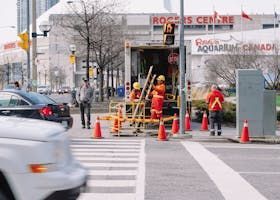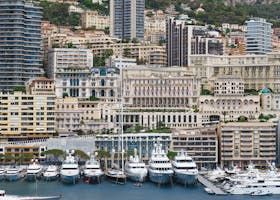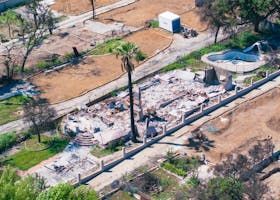The 2025 Los Angeles wildfires have fundamentally reshaped California's luxury real estate landscape, creating unprecedented challenges for agents marketing properties in fire-prone zones. With LA County home sales falling 7.9% in high-risk areas and properties staying on market significantly longer, real estate professionals must adapt their pricing strategies and marketing approaches to navigate this transformed market environment.
The wildfires that erupted on January 7, 2025, have become the most destructive in Los Angeles history, scorching over 57,000 acres and destroying more than 16,200 structures. This devastation extends far beyond the immediate burn zones, creating ripple effects throughout California's entire real estate ecosystem that luxury agents must understand and address.
Current Market Reality: Understanding the New Fire Zone Dynamics
The immediate aftermath of California's historic wildfires has created a bifurcated market where traditional luxury real estate strategies no longer apply uniformly. Properties in fire-prone zones are experiencing extended market times, with some high-end listings sitting for months rather than weeks , according to Aaron Kirman, CEO of Christie's International Real Estate Southern California.
The California Association of Realtors reports that home sales in Los Angeles County declined 7.9% in May 2025 compared to the previous year, while prices simultaneously rose 2.9%. This unusual combination of falling sales volume and rising prices reflects the complex dynamics at play in fire-affected markets.
Insurance availability has emerged as the primary market driver, often superseding traditional factors like location prestige or architectural features. Many insurers have withdrawn from high-risk areas entirely, forcing homeowners onto the California FAIR Plan, which caps residential coverage at $3 million - insufficient for most luxury properties.
The market segmentation is stark: coastal regions in central and northern California and arid desert areas in the extreme south have experienced relative benefits, as these areas were farther from recent wildfires. Conversely, vegetated and mountainous areas around Los Angeles and in the Sierras have seen property values decline relative to state averages.
Strategic Pricing Approaches for Fire-Risk Properties
Pricing luxury properties in fire-prone areas requires a fundamental shift from traditional comparative market analysis to risk-adjusted valuation models. The Federal Reserve Bank of San Francisco found that distance from high fire-risk zones now significantly impacts residential housing values, a change that has intensified since the late 2010s .
Successful agents are implementing tiered pricing strategies based on specific risk factors. Properties within five miles of recent wildfire perimeters typically see a 2.2% price reduction compared to similar homes in lower-risk areas. However, this impact varies significantly based on fire frequency, proximity to recent burns, and available mitigation features.
The key is to position fire-risk properties not as discounted distressed sales, but as opportunities for buyers seeking value in premium locations with enhanced protective features. Properties that incorporate fire-resistant materials, defensible space design, and comprehensive evacuation planning can command premium pricing within their risk category .
Market analysis shows that properties with documented fire mitigation features - including Class A roofing, ember-resistant vents, ignition-resistant siding, and operable shutters - maintain stronger pricing power. Nathan Wittasek, a fire protection consultant, notes that affluent buyers increasingly view these features "not as burdens, but as strategic investments in family stability and legacy."
Consider implementing a three-tier pricing approach: standard market pricing for properties with comprehensive fire protection systems, moderate discounts for properties with basic mitigation features, and significant price adjustments for properties requiring substantial fire-safety investments. This strategy acknowledges risk while positioning properties competitively within their risk category.
Insurance-First Marketing: Leading with Protection and Peace of Mind
The most successful luxury agents in fire-prone areas have shifted from amenity-focused marketing to protection-centered positioning. Buyers now prioritize fire safety and insurance availability over traditional luxury features like infinity pools or wine cellars . This fundamental change requires completely reimagining marketing materials and sales presentations.
Leading agents like Carl Gambino report that high-net-worth clients are requesting property-specific fire risk assessments before purchasing and hiring standby private firefighting companies. This level of due diligence was virtually unheard of in luxury markets just two years ago.
Create marketing materials that lead with insurance availability and fire protection features. Develop relationships with insurance specialists who can provide preliminary coverage assessments for prospective buyers. Properties that can demonstrate existing insurance coverage or clear pathways to coverage have significant competitive advantages .
The most effective marketing campaigns now feature detailed fire protection portfolios including evacuation route maps, defensible space documentation, fire-resistant building materials specifications, and available insurance coverage details. These materials should be as professionally produced and comprehensive as traditional luxury property brochures.
Consider partnering with fire protection consultants to provide third-party risk assessments for listings. This independent validation can be powerful in overcoming buyer concerns and justifying pricing premiums for well-protected properties.
Targeting the Right Buyers: Understanding New Luxury Market Segments
The luxury buyer profile in fire-prone areas has evolved dramatically. Traditional buyers focused on lifestyle and prestige have been joined by risk-conscious investors and preparedness-minded families who prioritize safety infrastructure over traditional amenities .
Ruby Wang, global real estate adviser at The Daftarian Group, reports growing interest in Orange County communities like Newport Coast and Irvine among previous LA luxury buyers. However, a significant segment remains committed to fire-prone areas, particularly those with multi-generational ties to specific communities.
The emerging buyer segments include:
Risk-Conscious Luxury Buyers : These buyers specifically seek properties in fire-prone areas but demand comprehensive protection systems. They're often willing to pay premiums for documented fire safety features and may have experience with wildfire recovery.
Legacy Preservationists : Families with deep community ties who prioritize staying in familiar areas despite increased risks. These buyers focus on properties that can protect family heritage and community connections.
Opportunistic Investors : Sophisticated investors who recognize that fire risk has created pricing opportunities in otherwise premium markets. They typically require detailed risk assessment data and focus on properties with strong mitigation potential.
Tailor marketing messages to each segment. Risk-conscious buyers respond to detailed technical specifications and protection system documentation. Legacy preservationists appreciate community history and neighborhood continuity messaging. Opportunistic investors require comprehensive financial analysis including insurance cost projections and risk-adjusted return calculations.
Geographic Market Shifts: Where Luxury Buyers Are Moving
Understanding migration patterns within California's luxury market is crucial for agents working in fire-affected areas. Cindy Ambuehl from Christie's International Real Estate Southern California reports "a clear decline in demand for properties perched high in the hills or deep in the canyons, largely due to heightened concerns over fire risk and rising insurance costs."
Conversely, flatter, more walkable neighborhoods, particularly those close to retail and dining, are experiencing increased interest. This shift represents a fundamental change in California luxury market preferences, where hillside and canyon properties previously commanded premium pricing.
The data from Pacific Palisades illustrates this trend: 202 land listings are currently active, including 63 new entries with only 16 in escrow. Since the fires, just 75 lots have sold, indicating inventory is accumulating faster than absorption. Projections suggest available lots could exceed 500 by year's end.
Orange County has emerged as a primary beneficiary of LA County luxury buyer migration. Newport Coast and Irvine are seeing particularly strong demand from families seeking "space, safety, and highly ranked schools," according to market analysts.
Some luxury buyers are making more dramatic geographic shifts. Long-time residents, especially retirees, are exploring out-of-state options like Texas and Florida, driven by concerns about urban congestion and tax burdens in addition to fire risk.
Agents should develop partnerships with colleagues in receiving markets and maintain expertise in both fire-prone and migration destination areas. Understanding comparative value propositions between fire-risk and safer locations helps position properties appropriately and manage client expectations.
Enhanced Due Diligence: New Standards for Fire-Zone Properties
The luxury real estate transaction process in fire-prone areas now requires enhanced due diligence that goes far beyond traditional property inspections. Buyers are demanding comprehensive fire risk assessments, insurance availability studies, and detailed evacuation planning as standard components of the purchase process .
Professional fire risk assessments have become as important as structural inspections. These evaluations examine defensible space compliance, building materials fire resistance, access road adequacy for emergency vehicles, and proximity to fire services. Properties that proactively provide these assessments demonstrate transparency and reduce buyer concerns.
Insurance due diligence has become particularly complex. Buyers need to understand not just current coverage availability, but projected premium increases and coverage limitations. The California FAIR Plan's $3 million residential coverage limit is insufficient for most luxury properties, requiring supplemental coverage strategies.
Develop relationships with specialized service providers including fire protection consultants, insurance specialists familiar with high-risk areas, and emergency planning experts. Create standardized due diligence packages that address buyer concerns proactively rather than reactively.
Consider implementing buyer education programs that help clients understand fire risk factors, mitigation options, and insurance strategies. Educated buyers make faster decisions and are less likely to withdraw from transactions due to fire-related concerns.
Technology and Innovation: Modern Tools for Fire-Zone Marketing
Technology plays an increasingly important role in marketing properties in fire-prone areas. Advanced mapping tools, drone technology, and virtual reality systems can effectively communicate both risk factors and protection systems to potential buyers .
Interactive risk mapping allows buyers to visualize fire history, evacuation routes, and defensible space boundaries. These tools help buyers understand risk in context rather than simply avoiding fire-prone areas entirely.
Drone technology is particularly effective for documenting defensible space, showing property boundaries in relation to vegetation, and demonstrating access routes. High-quality aerial footage can also showcase properties' positions relative to fire risk factors and protection resources.
Virtual reality tours can be enhanced with safety feature highlights, showing fire protection systems, safe rooms, and evacuation routes in immersive detail. This technology is especially valuable for out-of-area buyers who cannot easily visit properties multiple times.
Implement comprehensive digital marketing strategies that leverage these technologies while maintaining the high production values expected in luxury markets. The goal is to provide complete information that builds confidence rather than highlighting concerns.
Working with Insurance Providers: Building Strategic Partnerships
Insurance availability has become the ultimate deal-maker or deal-breaker in fire-prone luxury markets. Successful agents are developing strategic partnerships with insurance providers who still write policies in high-risk areas and specialists who can navigate the California FAIR Plan system .
The insurance landscape in California has changed dramatically. Many major insurers have stopped issuing new homeowner policies in high-risk areas or dropped existing policyholders. State Farm alone faces an estimated $7.6 billion in losses from the LA fires, while the California FAIR Plan faces $4.8 billion in claims.
Agents should maintain relationships with insurance brokers who specialize in high-risk properties and understand supplemental coverage options beyond the FAIR Plan's limitations. Some affluent buyers are purchasing multiple policies to achieve adequate coverage levels.
Consider offering insurance pre-qualification services where buyers can understand coverage availability and costs before making offers. This service reduces transaction friction and helps buyers make informed decisions about properties they can actually insure adequately.
Develop expertise in insurance cost modeling to help buyers understand long-term ownership costs. Premium increases of 40% or more are common in high-risk areas, significantly impacting total cost of ownership calculations.
Renovation and Mitigation: Adding Value Through Fire Protection
Properties in fire-prone areas that lack adequate protection systems present both challenges and opportunities. Strategic fire mitigation improvements can justify premium pricing and reduce insurance costs, creating win-win scenarios for sellers and buyers .
The most impactful mitigation measures include Class A fire-resistant roofing materials, ember-resistant vents, ignition-resistant siding, defensible space landscaping, and upgraded water access for firefighting. These improvements typically cost far less than the property value protection they provide.
Nathan Wittasek notes that affluent homeowners are "baking fire-resilience into their architectural plans" without sacrificing design integrity. Modern fire protection systems can be integrated seamlessly into luxury properties without compromising aesthetics.
Consider developing relationships with contractors and architects who specialize in fire-resistant construction and retrofits. Properties with documented protection systems command pricing premiums and sell faster than unprotected properties in the same risk zones.
Create before-and-after case studies showing how fire mitigation improvements affected property values and market acceptance. These materials can be powerful tools for convincing sellers to invest in protection systems before listing.
Legal and Regulatory Considerations: Navigating the New Compliance Landscape
The regulatory environment for fire-prone properties continues evolving as California implements new building codes and insurance regulations. Agents must stay current with changing requirements that affect property values, development potential, and transaction feasibility .
California's fire codes now require fire-resilient construction in high-risk fire zones. These requirements affect rebuilding costs and may impact development potential for vacant land in fire-prone areas.
The recent discussion of temporarily waiving Los Angeles's "mansion tax" for fire-damaged properties illustrates how quickly regulatory environments can change. This tax levies 4% on sales above $5 million and 5.5% on sales above $10 million, significantly impacting luxury transactions.
Zoning changes and development restrictions in fire-prone areas may affect property rights and future development potential. Understanding these factors is crucial for accurate pricing and buyer counseling.
Maintain relationships with land use attorneys and stay current with regulatory changes that affect fire-prone properties. These factors increasingly influence property values and transaction feasibility.
Community and Lifestyle Marketing: Emphasizing Resilience and Connection
Despite fire risks, many luxury buyers remain drawn to fire-prone areas for lifestyle and community reasons. Successful marketing emphasizes community resilience, preparedness, and the unique lifestyle benefits that justify accepting increased risk .
Communities that have implemented comprehensive fire protection programs, including community defensible space management, emergency communication systems, and coordinated evacuation planning, can market these features as lifestyle amenities.
Emphasize community solidarity and mutual support systems that develop in fire-prone areas. Many residents report stronger community connections and preparedness mindsets that enhance quality of life despite increased risks.
Highlight access to natural amenities and outdoor recreation that drew buyers to these areas originally. Many fire-prone locations offer unparalleled access to hiking, cycling, and outdoor activities that remain valuable despite seasonal fire risks.
Create marketing materials that position fire risk as a manageable aspect of an exceptional lifestyle rather than an overwhelming concern. Communities that successfully balance risk awareness with lifestyle appreciation maintain stronger property values.
Economic Impact and Investment Perspective: Long-Term Market Analysis
Understanding the broader economic impacts of wildfire on California real estate markets helps agents counsel clients about long-term investment prospects. UCLA Anderson School of Management estimates total insured losses from the LA fires at up to $44.5 billion, making them potentially the costliest wildfires in California history .
The economic impact extends beyond direct property damage. Business disruption, infrastructure costs, and population displacement create lasting effects on local real estate markets. However, historical analysis shows that well-located properties in fire-prone areas often recover value over time, particularly when protected by effective mitigation systems.
Research indicates that properties with comprehensive fire protection systems maintain better value stability during fire events and recover faster afterward. This resilience can justify higher acquisition costs for protection-equipped properties.
Investment analysis must now include fire risk as a permanent factor rather than an occasional concern. Properties in fire-prone areas require higher insurance reserves, emergency fund allocations, and ongoing mitigation investments.
However, fire risk has also created opportunities for sophisticated investors who understand risk mitigation and can identify undervalued properties with protection potential. These investment strategies require specialized expertise but can generate superior returns.
Develop financial modeling capabilities that incorporate fire risk factors, insurance costs, and mitigation expenses into investment analysis. Clients need comprehensive understanding of risk-adjusted returns rather than simple price comparisons.
Future Market Trends: Preparing for Long-Term Changes
California's luxury real estate market in fire-prone areas will continue evolving as climate change intensifies wildfire risk and insurance markets adapt. Successful agents must anticipate these changes and position themselves as experts in the new market reality .
Climate scientists predict that fire seasons will continue lengthening and intensifying, making fire risk a permanent rather than seasonal concern. This shift will likely accelerate the premium placed on fire-resistant properties and communities with comprehensive protection systems.
Insurance markets may stabilize at higher premium levels, but properties with documented protection systems will likely maintain better coverage availability and pricing. This differentiation will increasingly drive property values in fire-prone areas.
Technology innovations in fire detection, suppression, and building materials will create new opportunities for property protection and value enhancement. Early adopters of effective new technologies may gain competitive advantages.
Demographic shifts may continue favoring safer locations, but fire-prone areas with exceptional lifestyle amenities and comprehensive protection systems will likely maintain premium market positions.
Stay current with climate research, insurance industry developments, and fire protection technology advances. Agents who position themselves as experts in these evolving areas will capture market share as the industry adapts to new realities.
Frequently Asked Questions
How should I price a luxury property in a fire-prone area compared to similar properties in safer locations?
Pricing should reflect a comprehensive risk assessment rather than blanket discounts. Properties with documented fire protection systems may warrant only 2-5% adjustments, while unprotected properties in high-risk areas may require 10-15% price reductions. The key is positioning the property within its risk category rather than competing directly with safer locations. Focus on value relative to similar fire-prone properties rather than broader market comparisons.
What fire protection features add the most value to luxury properties?
Class A fire-resistant roofing materials, ember-resistant vents, ignition-resistant siding, and comprehensive defensible space management provide the highest value-to-cost ratios. Advanced systems like automated sprinkler systems, fire-resistant landscaping, and emergency power systems also add significant value. The most important factor is documentation – buyers need verified proof that protection systems meet or exceed current fire codes and insurance requirements.
How can I help buyers secure adequate insurance coverage for properties in fire-prone areas?
Develop relationships with insurance brokers who specialize in high-risk properties and understand supplemental coverage options beyond the California FAIR Plan's $3 million residential limit. Consider offering insurance pre-qualification services and educate buyers about the total cost of ownership including higher premiums. Properties with documented fire protection systems typically have better coverage availability and lower premium costs.
Should sellers invest in fire mitigation improvements before listing, or price properties to account for needed improvements?
Strategic fire mitigation improvements typically provide positive returns on investment and significantly improve marketability. Properties with comprehensive protection systems sell faster and command higher prices within their risk categories. However, the decision depends on the seller's financial situation and timeline. Cost-effective improvements like defensible space management and basic ember protection should almost always be completed before listing.
How do I market to buyers who are specifically looking for properties in fire-prone areas despite the risks?
Focus on comprehensive risk management rather than risk avoidance. These buyers typically appreciate detailed technical information about protection systems, emergency planning, and community preparedness. Emphasize the lifestyle benefits that justify accepting managed risk, such as natural beauty, privacy, and outdoor recreation access. Provide complete risk disclosure paired with detailed mitigation information to build confidence in informed decision-making.
Conclusion: Mastering the New Fire-Zone Real Estate Reality
California's historic wildfires have permanently transformed the luxury real estate landscape, creating both unprecedented challenges and unique opportunities for agents who adapt their strategies accordingly. Success in fire-prone markets now requires expertise in risk assessment, insurance navigation, and protection system evaluation alongside traditional luxury market skills .
The 7.9% decline in LA County home sales in fire-risk areas reflects a market in transition, not a market in permanent decline. Properties with comprehensive fire protection systems, adequate insurance coverage, and strategic positioning continue finding buyers, often at premium prices within their risk categories.
The agents who will thrive in this new environment are those who embrace the complexity rather than avoiding it. By developing expertise in fire protection systems, insurance solutions, and risk-adjusted valuation, luxury agents can provide irreplaceable value to both buyers and sellers navigating these challenging markets.
The future belongs to agents who understand that fire risk is now a permanent factor in California real estate rather than an occasional concern. Those who position themselves as experts in managing this risk while maximizing property value will capture significant market share as the industry continues adapting to climate change realities.
The key to success lies in balancing honest risk assessment with strategic opportunity identification. Fire-prone areas will continue attracting buyers for their lifestyle benefits, natural beauty, and community character. The agents who can help clients safely and profitably participate in these markets will build lasting success in California's evolving luxury real estate landscape.











